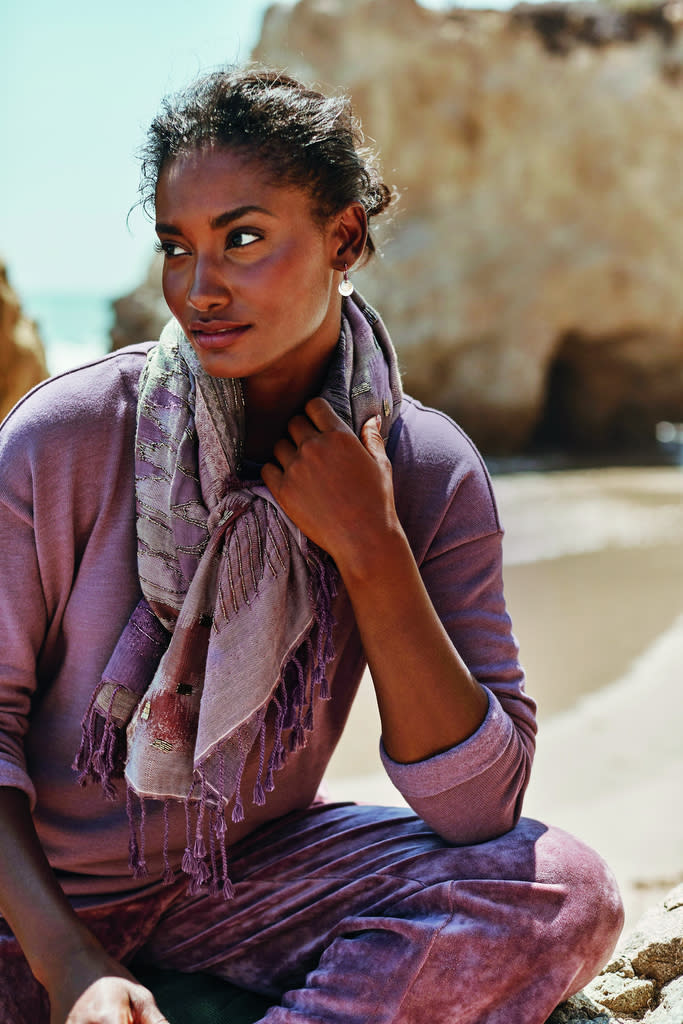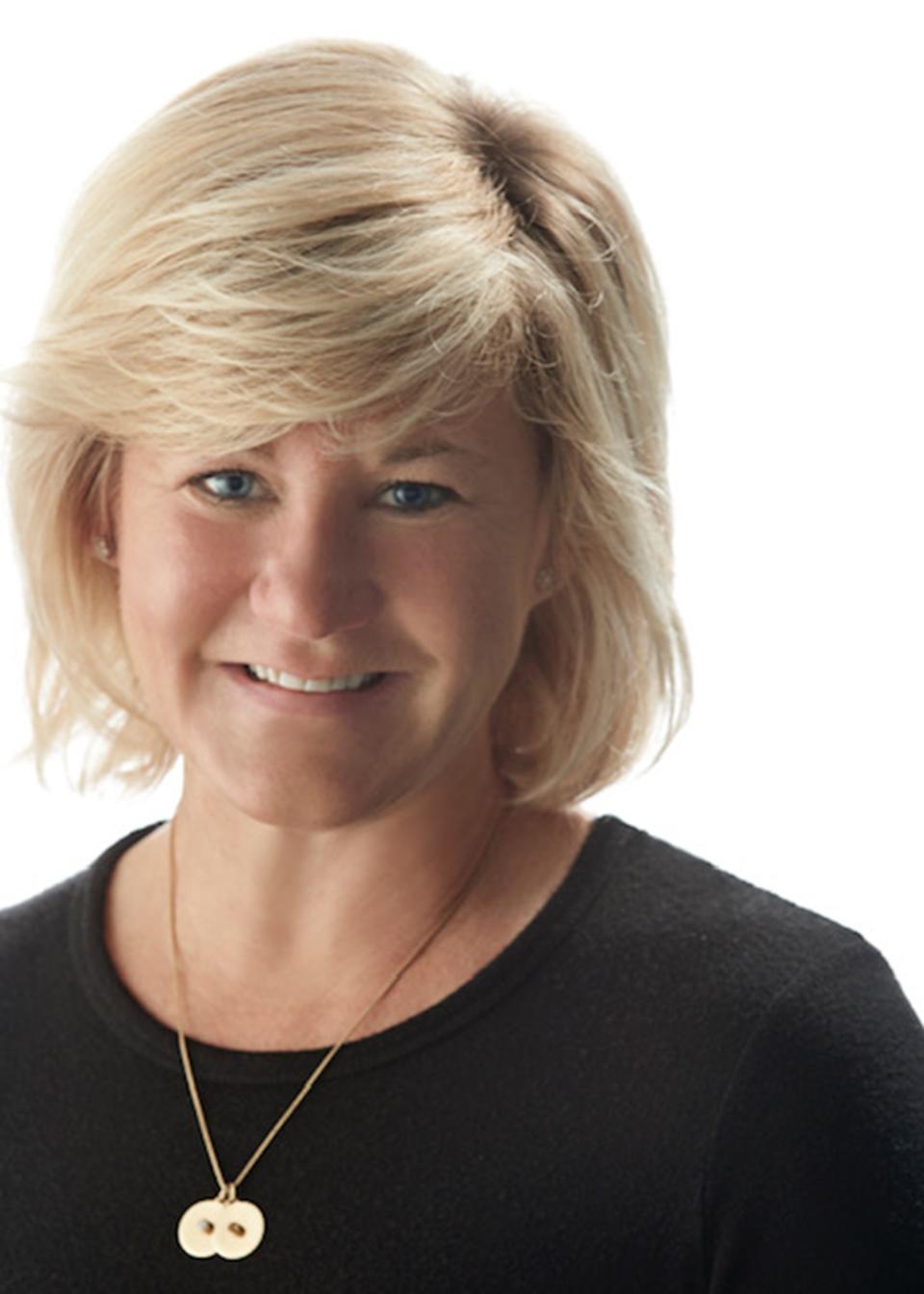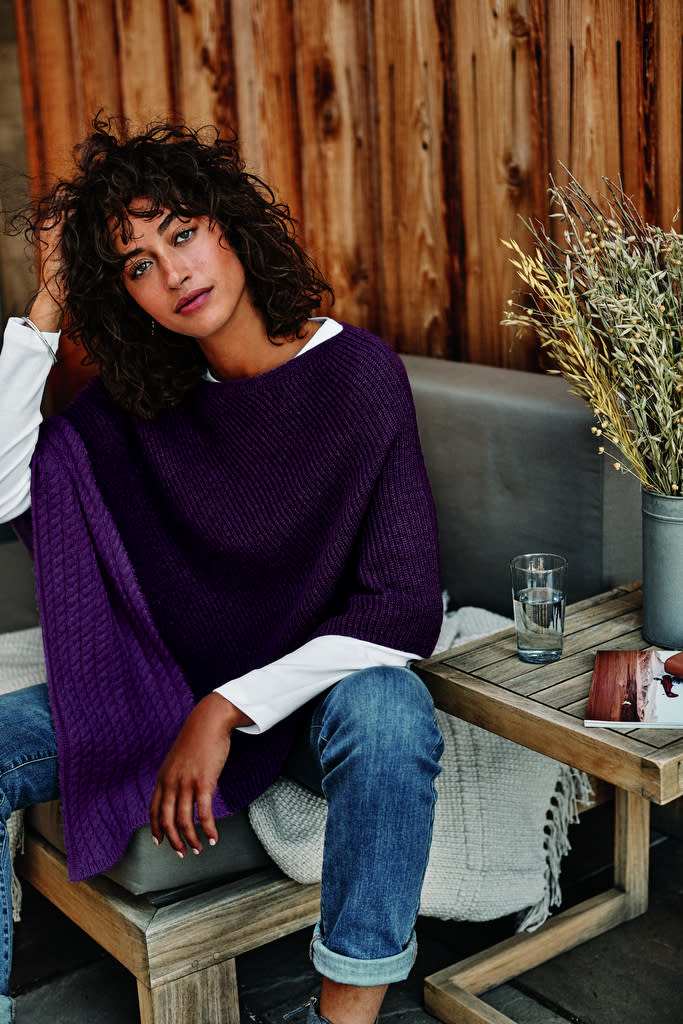Managing J. Jill Through COVID-19 and a Year of Change

A year ago, J. Jill almost drowned in the wave of bankruptcies that beset retailing.
“A lot of people were tolling the death knell for J. Jill,” acknowledged Claire Spofford, chief executive officer of the women’s specialty business.
More from WWD
Before Spofford became CEO in February 2021, interim CEO Jim Scully pulled J. Jill out of financial crisis by negotiating a debt restructuring plan with lenders, thereby strengthening the balance sheet and skirting a bankruptcy. “It reflected a belief in the potential of this business and brand,” Spofford said.
For her part, Spofford has shepherded the retailer through the pandemic via “a reset” of the business, not an overhaul or repositioning. J. Jill won’t waver from its niche — casual, easy-to-wear, on-trend styles that are never edgy or fancy — targeting women ages 45 to 60. With average household incomes of $150,000, the J. Jill customer typically also shops such brands as Nordstrom, Talbots, Eileen Fisher and Soft Surroundings.

Courtesy of J. Jill
The reset has involved inventory reduction, a focus on gross margin and greater full-price selling, shifts in the cadence of merchandise drops, a “surgical” approach to promotions, some store closings and filling key vacancies in management, including naming Kyle Polischuk as chief human resources officer and Kara Howard as senior vice president of marketing and customer experience. Two years ago, Elliot Staples became senior vice president of design.
The publicly traded retailer, selling almost all of its products under its own label, generated $421.3 million in revenues last year and $691.3 million in 2019. Signs of progress came in August when the company voluntarily paid off $25 million in debt, thereby avoiding interest rate increases, and with second-quarter sales and operating profit gains, although there was a net loss due to onetime charges.
Before J. Jill, Spofford was the president of Qurate’s Cornerstone Brands portfolio. She’s held top jobs at Orchard Brands, Appleseed’s and Timberland, and was once J. Jill’s senior vice president and chief marketing officer.
In her first interview since becoming the company’s CEO, Spofford said based on her experience, she knows J. Jill’s “space” and customer, and believes its ace in the hole is its 50-50 balance of direct-to-consumer and store revenues. “We have always been direct-to-consumer. It gives us deep insight into our consumers that we can mine and use to drive the business. We didn’t open our first stores until 1999.”
In the following Q&A, Spofford discusses the J. Jill appeal and strategy and outlines what’s ahead for the 62-year-old brand, founded by Karl Lipsky and his wife who named it after their daughters, Jennifer and Jill.

WWD: How is the recovery going?
Claire Spofford: We are still working on some operating opportunities to run the business a little bit differently and be more disciplined with inventory management. We made some nice progress in second-quarter earnings. We are cognizant and appreciative that there is a tailwind in women’s apparel right now. But we feel what we’re doing differently to manage our business will allow us to sustain this progress.
We used to focus more on the top-line growth than gross margin. Now, we are really focused on the gross profit. Not that we don’t want to grow — and we will grow — but we want to make sure it’s healthy, profitable growth. We used to go out with 30 percent off on a new collection. We didn’t give anything a chance to sell at full price. We are not doing that anymore. We will put it out there and see how she responds. Because we are [very] penetrated from a digital standpoint, we can communicate with her, and promote surgically the things that aren’t turning as fast, address this in season and not carry over inventory season-to-season and year-to-year, which we did in the past.
WWD: Can you sustain the level of full-price selling through holiday?
C.S.: There are periods where you need to be on promo [or] you can’t compete. But everything is on a spectrum. It’s not a binary situation, whether to promote or not. It’s how much, how deep, how often. So we are really trying to tighten that up. But with the competitive environment and what it will look like for holiday, we don’t have our heads in the sand.
WWD: Do supply chain issues and product scarcity help maintain full price selling?
C.S.: We were buying inventory in a more disciplined way anyway. Certainly week-to-week we are monitoring supply chain situations, factory closures, logistics issues. We are airing more in the back half of this year than we would otherwise. The team is focused on ensuring we still have the ability to storytell and present product in a way that’s compelling to the customer.

Courtesy of J. Jill
WWD: What’s the outlook on margins given higher shipping costs and holiday promotions?
C.S.: We mentioned in our second-quarter earnings that we will see some impact to gross margins in the back half of the year due to air [shipping] things in. Obviously, the carriers are all raising prices. Everybody is dealing with this. We are managing through it as best we can. The other thing, which you saw in the second quarter, from a margin standpoint, we are up 1,040 basis points versus 2019. We had to job out inventory in the second quarter of 2019. We are trying very hard not to do that going forward. (About half of the basis point gain was due to the reduction in job outs; the rest was better product acceptance.)
WWD: Are you situated OK with holiday inventories?
C.S.: Yes. I won’t say it’s easy. We are working it everyday to make sure we have the right inventories to do the business we expect and we are managing and reshuffling. We flow in newness so the [color] palettes transition to hang together on the floor, and we have the ability to adjust and re-jiggle. It’s a lot of work for the team.
We had always come out with a big brand reveal — a new floor set once a month supported with a big catalogue drop and a lot of marketing. Then we would try to reinvigorate mid-month with another catalogue drop and marketing. But you got diminished sell-throughs the longer the assortment was out there. So now we’re spreading out the big floor sets from 12 months to nine, spreading out the investment, but we are also flowing capsules of newness every one to two weeks and supporting that with digital marketing. It could be a refresh of our core J. Jill brand with a capsule, or maybe a capsule of one of our sub brands — Pure Jill, Wearever or Fit. That accomplishes a lot of things. It leverages the marketing investment more effectively. It evolves our model to be more digitally focused from a marketing standpoint and it reduces the catalogue expense. But catalogue is still an important part of the marketing mix.
WWD: With just 261 stores as of the end of the second quarter, will e-commerce sales eventually exceed brick-and-mortar sales?
C.S.: Direct sales as a percentage of total sales were 46 percent in the second quarter. We are actively looking at our fleet of stores and making sure we’ve got the right economics in all of our stores. We are planning on closing about 20 this year, which will impact the mix [of revenues]. I still think there is unit growth opportunities in retail. Not to beat the drum on this, but we have the consumer data to know exactly where our current customers are and we can model where like [potential] customers are and be really surgical where we place stores. That’s been a strength of ours. We are not closing stores because we think we have too many. We are closing them because we are being opportunistic.
WWD: When might there be store openings?
C.S.: We don’t have a set plan yet. We will be looking at it for next year. Whether we open stores next year or not, we are closing in on that window. Certainly, we will be putting things in motion next year and looking maybe at the back half of next year, 2023 and 2024 for unit growth.
WWD: Did you build a three-year plan?
C.S.: We are in the process of that right now. We are really focused on execution and recovery, and reestablishing a healthy baseline for the business, and then going forward, we are looking for strategic growth opportunities that relates to leveraging what we have. We have seen strong response all year to all of the assortment, not only in our core franchises like knits and linen but really strong response to embroideries and prints and novelties. We have also seen exceptional strength in Fit and Pure Jill. They’re potential growth opportunities and part of it reflects what’s happening in the marketplace with loungewear, athleisure and natural fabrications which Pure Jill really speaks to. So it’s driving organic growth within our current portfolio, and then as we look beyond that, with our d-to-c business and customer insight capabilities and data base we will identify additional growth.
WWD: What’s J. Jill’s fashion point of view?
C.S.: We describe it as premium casual, easy, trend-right, not trendy. We are not a tailored workwear. We have a great focus on fabrication and make. The hand of our product and fabrications are really nice for the price point. We went a little bit astray on that front a few years and took too much out of the product from a content and make standpoint. That’s back now. Elliot and his team are doing a terrific job. If you look at our Pure Jill collection, it’s also very consumer trend-right in terms of more sustainable fabrications and a more natural aesthetic.
WWD: What items are selling best?
C.S.: Our tops, both woven and knits, prints and embroidery are selling incredibly well. We’ve had a great year in our knit basics, Pima cotton Ts, denim and dresses. We saw pretty strong response across the board, though there are some challenges in more refined pants. Anything a little more structured, she wasn’t as interested in other than denim.
WWD: Other women’s brands have higher profiles. With the marketing, is there room for more noise?
C.S.: There is always room for the right noise. I believe in a really strong consistent message that is relevant to the consumer. We are doing some work in refining the brand-value proposition, but it’s not an overhaul. It’s just making sure it’s as compelling and relevant for today’s consumer. Maybe you will hear some more noise from us.
Sign up for WWD's Newsletter. For the latest news, follow us on Twitter, Facebook, and Instagram.

 Yahoo Finance
Yahoo Finance 